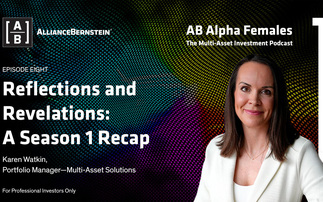Investing for income has never been so challenging. Bond yields have been at record low levels for years in the wake of the global financial crisis and quantitative easing programmes. The Covid-19 pandemic saw these central bank policies resume, putting further downward pressure on interest rates.
Meanwhile, huge swings in bond prices caught many investors off guard. Prices initially spiked as lockdowns were enacted across Europe and the US and investors fled to bonds.
This reversed quickly as uncertainty about the impact of the pandemic gripped markets, before volatility dropped and prices began to stabilise as central banks stepped in.
At the same time, the unprecedented impact of the pandemic on companies around the world saw dividends slashed. In the UK, the aggregate 2020 payout from listed companies collapsed to £61.9bn from more than £110bn in 2019, a drop of 44%, according to Link Group's quarterly Dividend Monitor report.
Two thirds of companies reduced or cancelled their dividends between the second and fourth quarter of the year, Link reported. UK dividends are not expected to return to previous highs until 2025 at the earliest.
With this troubled backdrop, where can income investors look for inspiration? Investment Week and SPDR ETFs from State Street Global Advisors (SSGA) hosted a roundtable on 21 April with a panel of multi-asset experts to give their views on where to look now for income as thoughts turn to the recovery: coupons, dividends, or somewhere in between?
Riding the dividend recovery
Starting the discussion and making the case for equities, Ben Jones, vice president and senior multi-asset strategist in the macro strategy team at State Street Global Markets, noted this was a timely discussion "as the yield on the S&P 500 has actually dropped below the yield on the US 10-year bond to near a record low of about 1.4%" (see page 13).
"Although those yields have really narrowed over the course of the last year, obviously a lot of that is to do with the rise in bond yields over the beginning of this year and also the cut in dividend payouts last year," he said.
"I think we need to look for where the recovery in dividends is likely to be greatest, and where the stability is likely to remain. I think there is going to be a great deal of unevenness in the degree of payouts going forward."
He noted widespread dividend cuts had shifted the landscape in terms of where income will be generated in the equity market.
In particular, Jones highlighted UK energy stocks, which traditionally have been "nice, steady income plays that make up a large weight in many income funds". Following the widespread cuts to payouts last year, however, "there [are] question marks about those areas - and justifiably so".
"I don't think necessarily those dividends are going to recover quite as quickly as some other areas," Jones said.
On the other hand, areas that are traditionally not considered reliable income payers are starting to look more attractive.
Jones explained: "One of the areas that I'm looking at very positively, not just from a capital appreciation perspective but also an income perspective now, is the technology sector.
"[Last year] has really shown that tech is becoming in some ways a defensive sector. The income streams and the quality of earnings have become far more reliable over recent years and, in some cases, recurring.
"That means you have got these very steady cash flows being generated and that in turn means that dividends are likely to remain very stable… and forecasts are for dividends to increase quite significantly."
Ahmed Behdenna, senior portfolio manager at Aviva Investors, agreed, adding that the wider tech "ecosystem" could also offer up income-generating opportunities.
He said: "For example as a sector, data centres in the US. Those names are exposed to those long-term trends and do carry actually quite an interesting dividend. For us it has also been about thinking a little bit outside the box and outside what has been the norm for income for the last few years, if not decades."
Accessing the technology trend also adds an element of growth to an income portfolio, he added.
Wayne Nutland, Premier Miton Investors' head of managed index solutions and manager of the Premier Miton Managed Index Balanced fund, supported the idea of the technology sector as an emerging income play.
"I think looking in other areas for income is very important if only to balance out the factor exposure of the portfolio. I think being able to access income from those growthier parts of the market is really important for a balanced portfolio, particularly if this long-run, sub-trend growth dynamic returns in the major economies in the next ten years."
State Street Global Markets' Jones also cited corporate cash levels as an important indicator of potential income sources.
"If we look across the whole of corporate America for example, cash levels increased by about one-third last year; in Europe cash levels increased by about 20% last year," he said.
"That represents a lot of cash sitting in corporate pockets and really burning a hole there. I think as confidence returns in 2021 and growth forecasts start to rise, companies will be much more confident in then returning that capital to shareholders in the form of both dividends and buybacks. We are already seeing in some sectors and some markets those dividend payouts starting to increase."
Innovation is now needed to give more ways of returning capital to investors, some panellists said.
"Obviously buybacks have been a big way of returning capital to shareholders and traditional income structures don't enable investors to get that capital," Nutland said. "So if the industry can devise a way of doing that, I think that would be really useful innovation."
Matt Brennan, head of passive portfolios at AJ Bell, also highlighted a discussion recently started by HM Treasury regarding income distribution from capital. With more people entering retirement and seeking alternatives to annuities, this kind of innovation could help managers meet demand by finding new ways of building income portfolios and products.













